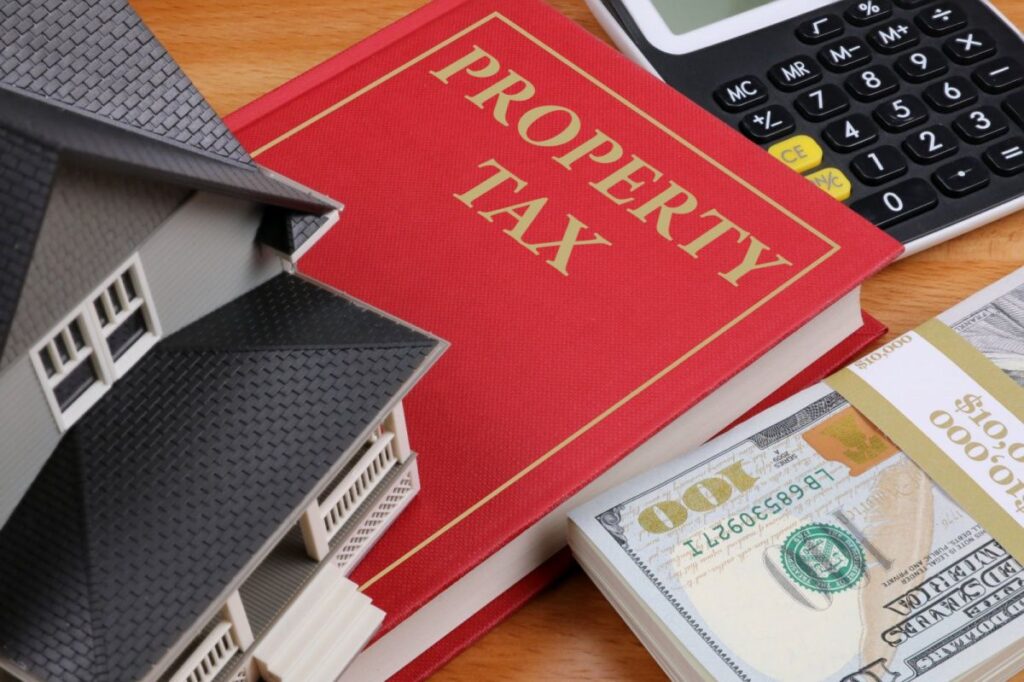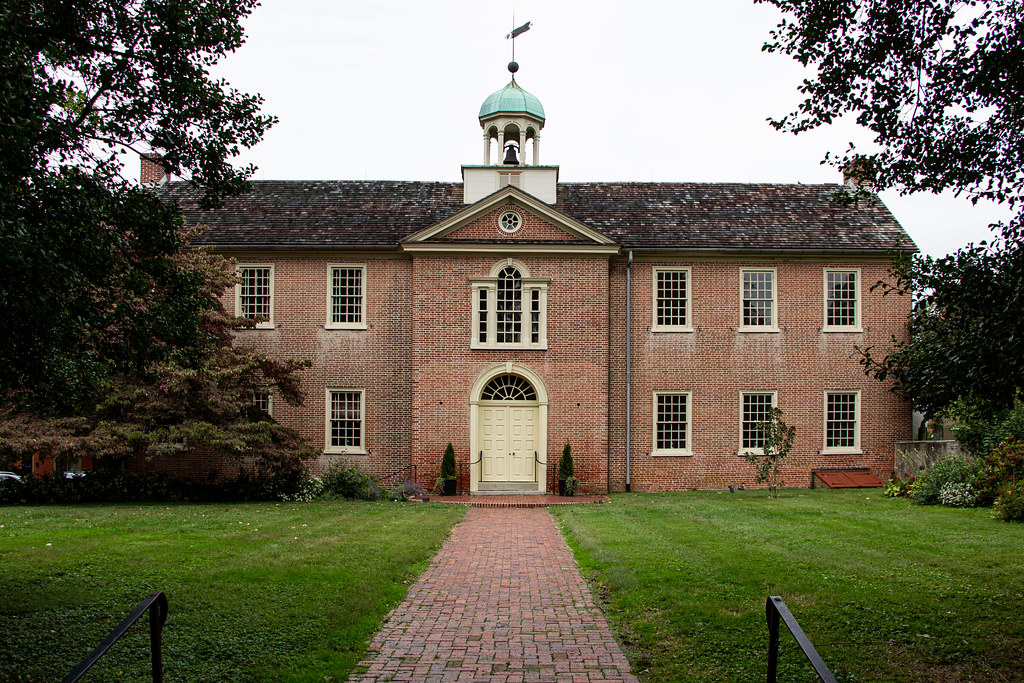
Moving to a new state brings exciting opportunities, but for new homeowners, understanding property taxes is a critical step. These taxes vary significantly across the U.S. and are essential for budgeting and making informed real estate decisions. This guide aims to clarify these complexities, offering a practical state-by-state overview specifically designed for you, the new resident.
A property tax is a municipal charge levied by local governments—counties, cities, or special tax districts—on real estate, including homes and businesses. The amount owed depends on “the appraised fair market value of the property, as determined by the property tax assessor.” These taxes are crucial, funding essential local services like schools, roads, and emergency services. In fiscal year 2022, property taxes made up 27.4 percent of total state and local tax collections, and a substantial 70.2 percent of local collections, highlighting their central role in local finance.
Because property tax calculations “vary widely from county to county,” comparing them effectively requires aggregate data. Our focus here is on “median property tax as percentage of home value,” which provides a more accurate reflection of the true burden than raw dollar amounts, which can be inflated by high property values. With this understanding, let’s delve into specific states to equip you with the insights needed to navigate your property tax journey.

1. **Alabama**Alabama boasts a remarkably low median property tax burden, ranking 49th nationally with a median property tax rate of 0.33% as a percentage of home value. This affordability is a significant draw for new residents. Property taxes here primarily fund local services, embodying the “benefit principle of taxation” where payers directly benefit from local amenities like schools and roads.
Despite the state’s low overall rates, county-level variations are notable. Autauga County, for instance, has a median housing value of $197,900 with $564 in median property taxes, at an effective rate of 0.2850%. In contrast, Jefferson County, a larger area, shows a median housing value of $224,900 but a higher median property tax of $1,340, for an effective rate of 0.5958%.
Even lower rates exist, such as in Choctaw County, with a median housing value of $111,800 and taxes of $199, yielding an effective rate of 0.1780%. Conversely, Bullock County, despite a lower median housing value of $79,400, has a higher effective rate of 0.3892% ($309 in median taxes).
For new residents, these figures highlight that while Alabama’s rates are appealing, a detailed look into specific county data is crucial. This due diligence ensures a full understanding of the local tax implications for your chosen property, preventing any unwelcome financial surprises.
Read more about: The Untouchable Narratives: Why Hollywood Directors Are Obsessed with ‘Unfilmable’ Books and the Masterpieces Born from the Challenge

2. **Alaska**Alaska presents a unique property tax environment, ranking 21st nationally with a median property tax rate of 1.04% as a percentage of home value. As a state without a personal income tax, local property taxes often play a more substantial role in funding municipal services, making this a critical area for new residents to understand.
County-equivalent data reveals significant diversity. Anchorage Municipality, a major urban center, shows a median housing value of $375,900 with $4,865 in median property taxes, resulting in an effective rate of 1.2942%. This higher rate reflects the demands of urban services. Contrast this with the Copper River Census Area, where a median housing value of $246,700 incurs a strikingly low $199 in median property taxes, for an effective rate of just 0.0807%.
Other areas present different profiles. Dillingham Census Area, with a median housing value of $163,800, has median property taxes of $2,875, translating to a substantial effective rate of 1.7552%. Meanwhile, the Kenai Peninsula Borough shows a more moderate effective rate of 0.6635% on a median housing value of $297,500, with $1,974 paid in median property taxes.
New residents to Alaska must be aware of these localized variations. Your actual property tax burden will vary considerably by borough or census area, directly impacting your housing affordability. Thoroughly researching specific local tax structures and rates is therefore essential before making any property purchase decisions in the Last Frontier.
Read more about: The Enduring Saga of the American Robin: An In-Depth Look at North America’s Most Prolific Songbird

3. **Arizona**Arizona’s property tax rates are generally lower than the national average, ranking 35th with a median property tax rate of 0.72% as a percentage of home value. This makes the state attractive for new residents seeking more manageable ongoing housing costs. However, this statewide median is merely a starting point, as local variations significantly influence your actual tax bill.
County-level data illustrates this range. Maricopa County (Phoenix area) boasts a median housing value of $414,700 and $1,965 in median property taxes, resulting in an effective rate of 0.4738%. This rate is notably lower than the state’s median, indicating a degree of tax efficiency in a major urban center. Conversely, Pima County (Tucson) has a median housing value of $286,900 but a higher median property tax of $2,248, leading to an effective rate of 0.7835%, slightly above the state average.
Apache County, with a median housing value of $68,500, has median property taxes of $574, leading to a higher effective rate of 0.8380%. In contrast, Greenlee County, with a median housing value of $136,300, pays just $489 in median property taxes for a much lower 0.3588%. This shows rural areas don’t always guarantee lower effective rates.
For new residents considering Arizona, understanding these county-specific differences is paramount. While the statewide median suggests affordability, your actual property tax burden will largely depend on your chosen county. Consulting local tax resources to get a precise estimate for your target property is highly advisable before finalizing your move.
Read more about: Navigating the Urban Jungle: The 12 Best Affordable Hybrid SUVs for Over 40 MPG in City Driving

4. **Arkansas**Arkansas offers a notably low property tax burden for new residents, ranking 44th nationally with a median property tax rate of 0.52% as a percentage of home value. This favorable effective rate is a key attraction for those prioritizing minimal ongoing housing expenditures, even as property taxes remain fundamental for funding local services across the state.
County data highlights local nuances within this low-tax environment. Benton County, a growing area, shows a median housing value of $285,100 with $1,731 in median property taxes, translating to an effective rate of 0.6072%. While slightly above the state median, it remains modest. Lafayette County, however, demonstrates an even lower median housing value of $74,600 and $422 in median property taxes, resulting in an effective rate of 0.5657%.
Pulaski County, encompassing Little Rock, reports a median housing value of $199,600 and $1,562 in median property taxes, leading to an effective rate of 0.7826%. This is among the state’s higher rates, signaling that major urban centers may have a slightly increased tax burden. Conversely, Montgomery County, with a median housing value of $136,000, incurs only $522 in median property taxes, for a very attractive effective rate of 0.3838%.
When planning your move to Arkansas, while the state generally boasts a favorable property tax environment, the specific county you choose significantly impacts your financial outlay. A thorough review of county tax rates and current property values is indispensable for new homeowners to gain a precise understanding of their potential property tax obligations.
Read more about: The AI Eye on Our Roads: How New Traffic Cameras Are Reshaping Enforcement and Safety

5. **California**California presents a property tax landscape that often requires careful consideration, ranking 32nd nationally with a median property tax rate of 0.74% as a percentage of home value. This percentage, however, can be misleading due to the state’s exceptionally high median housing values, which means even a low rate can translate into a substantial dollar amount.
The impact of California’s high property values is evident in county data. Alameda County reports a median housing value of $1,057,400, with $8,061 in median property taxes, for an effective rate of 0.7623%. Similarly, Marin County, with an even higher median housing value of $1,390,000, incurs $10,001 in median property taxes, at an effective rate of 0.7195%.
Even in counties with relatively “lower” median values for California, such as Kern County ($310,600 median housing value), median property taxes are $2,833, translating to a higher effective rate of 0.9121%. San Mateo County, despite one of the highest median housing values at $1,494,500, shows a lower effective rate of 0.6134% ($9,167 in median property taxes), possibly due to local levy structures.
For new residents eyeing California, it’s crucial to understand that while the *percentage* rate might appear moderate, the *dollar amount* of property tax paid will almost certainly be very high due to expensive real estate. Thoroughly researching specific property assessments and tax rates is absolutely essential before committing to a purchase in this competitive market.
Read more about: The Enduring Saga of the American Robin: An In-Depth Look at North America’s Most Prolific Songbird

6. **Colorado**Colorado offers a generally favorable property tax environment, placing it among the states with lower burdens for new residents. Ranking 39th nationally, the state’s median property tax rate is 0.6% as a percentage of home value. This lower rate is a significant advantage for those looking to minimize their annual housing expenses in a state renowned for its outdoor lifestyle and economic vibrancy.
However, local variations within Colorado are noteworthy. Denver County, a major urban hub, has a median housing value of $586,700 and median property taxes of $2,596, yielding an effective rate of 0.4425%. This rate is lower than the state’s median, indicating a degree of tax efficiency. Conversely, Adams County, with a median housing value of $458,400, experiences median property taxes of $2,770, resulting in a slightly higher effective rate of 0.6043%.
Some counties demonstrate even lower effective rates, like Chaffee County, where a median housing value of $598,500 leads to $1,664 in taxes for a low 0.2780%. Conversely, Kiowa County, with a lower median housing value of $148,600, has a higher effective rate of 0.5801% ($862 in median property taxes). These highlight how local needs and valuations influence individual tax bills.
New residents moving to Colorado should appreciate the generally low effective property tax rates but must still conduct diligent research. Disparity between urban and rural areas, coupled with unique county-level policies, can dramatically influence your final tax obligation. Always confirm current millage rates and assessment methodologies in your prospective county to ensure a transparent understanding of your potential costs.
Read more about: From Promising Prospects to Puzzling Flops: The Pickup Trucks That Just Can’t Seem to Find a Home

7. **Connecticut**Connecticut stands notably at the higher end of the national spectrum for property taxes, ranking 7th with a median property tax rate of 1.63% as a percentage of home value. This positions it among the states with a substantial property tax burden, a critical factor for new residents to consider as they evaluate the overall cost of living.
The state’s high property tax rate suggests a significant reliance on this revenue stream for its extensive local government services, particularly its robust public education system. This is a common characteristic of states that rely more heavily on local revenues than state-level income or sales taxes.
Data from its Planning Regions consistently reflects this high burden. The Capitol Planning Region, for instance, shows a median housing value of $298,200 with $6,390 in median property taxes, resulting in a staggering effective rate of 2.1429%. The Greater Bridgeport Planning Region demonstrates a similar trend, with a median housing value of $397,000 and $8,550 in median property taxes, leading to an effective rate of 2.1537%.
Even the “lower” effective rate in the Western Connecticut Planning Region remains high at 1.4746% for a median housing value of $625,400 ($9,222 in median property taxes). This consistently high level emphasizes a statewide commitment to local funding through property taxation. New residents must meticulously factor these substantial payments into their budgets and housing affordability, as they are a considerable ongoing cost of homeownership in Connecticut.
Moving from the generally lower tax states and a few high-tax outliers, our journey through the nation’s property tax landscape continues. This next segment will further empower new homeowners by dissecting the unique structures and county-specific data in Delaware, District of Columbia, Florida, Georgia, Idaho, and Illinois. Understanding these distinctions is not just about crunching numbers; it’s about making informed financial choices that impact your long-term housing affordability and overall financial well-being.
As we delve into these diverse financial territories, remember that state-level averages are merely a starting point. The true impact of property taxes on your budget is found in the local nuances—the specific county, city, or even special tax district where your property resides. We’ll continue to emphasize median property tax as a percentage of home value, offering you the most accurate comparison of the real tax burden, rather than being swayed by raw dollar amounts that can obscure the bigger picture.
Read more about: Your Essential Guide to Mandatory Minimum Car Insurance: Navigating State-Specific Requirements Across the U.S. in 2025

8. **Delaware**Delaware stands out with one of the lowest property tax burdens in the nation, ranking 48th with a median property tax rate of 0.43% as a percentage of home value. This makes the First State particularly attractive for new residents seeking minimal ongoing housing expenses. The state’s tax structure, with its lack of a state sales tax and generally low property taxes, contributes to a favorable overall financial environment for homeowners.
However, even within Delaware’s low-tax landscape, county-level variations provide important insights for potential homebuyers. Sus County, known for its coastal communities, boasts a median housing value of $353,300 but an even lower effective rate of 0.3314%, with median property taxes of $1,171. This is significantly below the state’s already low median.
Contrast this with New Castle County, a more populated area, where the median housing value is $329,800 and median property taxes are $2,444, resulting in a higher effective rate of 0.7411%. This rate, while still moderate by national standards, is nearly double that of Sus County. Kent County falls in between, with a median housing value of $290,600 and $1,331 in median property taxes, for an effective rate of 0.4580%.
For new residents considering Delaware, these figures highlight the importance of not just looking at the statewide average. While the state generally offers low property taxes, researching the specific county you’re interested in will help you understand your precise obligations. Factors like local service needs and assessment practices can create notable differences, even in a low-tax state like Delaware.
Read more about: Your Essential Guide to Mandatory Minimum Car Insurance: Navigating State-Specific Requirements Across the U.S. in 2025

9. **District of Columbia**The District of Columbia presents a unique property tax scenario, ranking 47th nationally with a median property tax rate of 0.46% as a percentage of home value. This places it among the states with a very low effective property tax burden, which might surprise some given its high median housing values. This low rate is a significant advantage for homeowners in the nation’s capital, helping to mitigate the high cost of real estate.
In the District of Columbia, the entire area functions as a single county-equivalent, simplifying the regional comparison found in other states. With a median housing value of $724,600, residents pay a median property tax of $4,180. This translates to an effective property tax rate of 0.5769%, which is slightly higher than the state’s median but still remarkably low, especially considering the premium housing prices.
The low effective rate in the District of Columbia reflects a deliberate tax policy that likely aims to balance revenue generation with the desire to attract and retain residents amidst a competitive housing market. While the dollar amount of taxes paid might seem high due to expensive properties, the percentage of home value is kept comparatively low, making homeownership more accessible than a raw dollar comparison might suggest.
For new residents moving to the District, understanding this advantageous effective rate is key. While the initial sticker shock of home prices can be substantial, the ongoing property tax burden, when viewed as a percentage of your property’s value, is quite favorable. Always verify the most current assessment values and tax rates for any specific property you consider, as even small changes can impact your overall cost of ownership.
Read more about: Your Essential Guide to Mandatory Minimum Car Insurance: Navigating State-Specific Requirements Across the U.S. in 2025

10. **Florida**Florida offers a mixed bag for new residents regarding property taxes, ranking 22nd nationally with a median property tax rate of 0.97% as a percentage of home value. This places it close to the national average, neither exceptionally high nor remarkably low. For many, Florida’s lack of a state income tax often balances out this moderate property tax burden, making the overall tax environment appealing.
However, county-level data in the Sunshine State shows considerable variation, underscoring the need for careful research. For instance, Alachua County has a median housing value of $266,800 with median property taxes of $2,623, resulting in an effective rate of 0.9831%, closely aligning with the state average. Broward County, a major metropolitan area, sees a median housing value of $380,400 with $3,610 in median property taxes, leading to an effective rate of 0.9490%, slightly below the state average.
Interestingly, some of Florida’s less populous counties demonstrate higher effective rates. Hardee County, with a median housing value of $129,400, incurs $1,358 in median property taxes, for a notable effective rate of 1.0495%. Similarly, Glades County reports a median housing value of $114,800 and median property taxes of $1,163, resulting in an effective rate of 1.0131%. These examples illustrate that lower property values do not automatically translate to lower effective tax rates.
Conversely, Monroe County, home to the Florida Keys, shows a much lower effective rate despite its very high median housing value of $723,800, with median property taxes of $3,943, yielding a rate of 0.5448%. This demonstrates how local policies and the dynamics of high-value markets can influence the effective tax burden. New residents should meticulously investigate the specific county and municipality where they plan to purchase, as local millage rates and assessment practices will significantly impact their annual property tax bill.
Read more about: Your Essential Guide to Mandatory Minimum Car Insurance: Navigating State-Specific Requirements Across the U.S. in 2025

11. **Georgia**Georgia presents a generally moderate property tax environment, ranking 29th nationally with a median property tax rate of 0.83% as a percentage of home value. This places it below the national average, making it an attractive option for new residents looking for manageable housing costs. While property taxes are a crucial funding source for local services, Georgia’s rates are often seen as balanced when considering the overall cost of living in the state.
The county-level data within Georgia reveals a wide spectrum of effective tax rates, from very low to surprisingly high. For example, Fannin County in North Georgia has a median housing value of $274,600 and very low median property taxes of $959, resulting in an effective rate of just 0.3492%. This makes it one of the most tax-efficient areas in the state. Forsyth County, a rapidly growing suburban area, shows a median housing value of $493,800 with $3,747 in median property taxes, leading to an effective rate of 0.7588%.
On the other end of the spectrum, some counties exhibit significantly higher effective rates. Stewart County, despite a low median housing value of $53,000, incurs $907 in median property taxes, translating to a substantial effective rate of 1.7113%. Dougherty County (Albany area) also shows a high effective rate of 1.3932% on a median housing value of $129,200, with $1,800 in median property taxes. These areas demonstrate how lower property values can sometimes coincide with higher effective tax rates if local funding needs are substantial and tax bases are smaller.
For new residents considering Georgia, a deep dive into county-specific data is non-negotiable. The statewide median offers a helpful benchmark, but the dramatic variations from rural to urban and from high-value to lower-value markets mean that your actual property tax burden will depend heavily on your chosen location. Always consult local tax assessors for the most accurate and up-to-date information for your specific property of interest.
Read more about: Totally Tubular! 12 Earth-Shattering Events That Made The ’90s The Unforgettable Decade We Still Obsess Over!

12. **Idaho**Idaho offers a relatively favorable property tax environment for new residents, ranking 37th nationally with a median property tax rate of 0.69% as a percentage of home value. This positions it among states with lower property tax burdens, which can be a significant draw for those seeking affordability amidst its growing popularity and natural beauty. These taxes primarily support local services that contribute to Idaho’s quality of life.
However, the picture becomes more detailed when examining county-level data. Ada County, encompassing Boise, a major urban center, reports a median housing value of $476,000 with median property taxes of $2,643, resulting in an effective rate of 0.5553%. This rate is notably lower than the state’s median, indicating a degree of tax efficiency despite higher property values. Conversely, Boise County, with a median housing value of $424,100, shows an even lower effective rate of 0.3704% ($1,571 in median property taxes).
On the other hand, some counties exhibit higher effective rates. Nez Perce County, with a median housing value of $291,300, has median property taxes of $2,529, leading to a substantial effective rate of 0.8682%. Power County also presents a higher burden, with a median housing value of $191,200 and median property taxes of $1,577, for an effective rate of 0.8248%. These examples illustrate that property tax costs can fluctuate significantly based on local needs and property assessments.
New residents moving to Idaho must understand that while the statewide median suggests affordability, their actual property tax experience will be highly localized. It’s crucial to research the specific county’s effective tax rates, as well as the local assessment practices, to ensure a complete understanding of the financial implications of homeownership in your desired location.
Read more about: The Final Curtain Call: Unforgettable Actors Who Died Before Their Last Movie Premiered

13. **Illinois**Illinois stands as one of the states with the highest property tax burdens, ranking 6th nationally with a median property tax rate of 1.73% as a percentage of home value. This elevated rate is a critical factor for new residents to consider, as it significantly impacts the ongoing cost of homeownership and overall affordability, often contributing to the higher cost of living in the state. Property taxes in Illinois are a primary funding source for local governments, especially for its extensive public education system.
County-level data consistently reflects this high burden, often exceeding the statewide median. Cook County, home to Chicago, reports a median housing value of $305,200 with median property taxes of $6,053, resulting in a robust effective rate of 1.9833%. DuPage County, another populous area, shows a median housing value of $374,100 with median property taxes of $7,833, leading to an effective rate of 2.0938%.
Even more striking are some of the suburban and rural counties that rely heavily on property taxes. Lake County exhibits one of the highest effective rates, with a median housing value of $326,600 and median property taxes of $8,743, translating to a staggering 2.6770%. DeKalb County also demonstrates a high burden, with a median housing value of $231,900 and median property taxes of $5,889, for an effective rate of 2.5395%.
Conversely, some areas might offer slightly lower effective rates, though still high by national standards. Putnam County, for instance, has a median housing value of $167,800 and median property taxes of $2,668, yielding an effective rate of 1.5900%, which is below the state median but remains considerable. New residents to Illinois must meticulously factor these substantial property tax payments into their budgeting and housing affordability calculations, as they represent a major ongoing expense of homeownership in the state.
Navigating the complexities of property taxes across states can feel like a daunting task, but with a clear, data-driven approach, you’re better equipped to make smart decisions. This guide has taken you through a diverse array of state and local property tax landscapes, from the lowest burdens in states like Alabama and Delaware to the significantly higher rates found in Connecticut and Illinois. Remember, the true cost of homeownership isn’t just the purchase price; it’s the ongoing financial commitments, with property taxes often being one of the most substantial.
Read more about: Your Essential Guide to Mandatory Minimum Car Insurance: Navigating State-Specific Requirements Across the U.S. in 2025
By understanding the median property tax as a percentage of home value, and by diligently researching county-specific data, new residents can avoid unwelcome financial surprises. Whether you’re drawn to a state for its economic opportunities, lifestyle, or simply its charm, always integrate property tax research into your moving checklist. Empower yourself with this knowledge, and you’ll be well on your way to a financially sound and comfortable new home. Your informed decisions today pave the way for a more predictable and stable financial future tomorrow.



